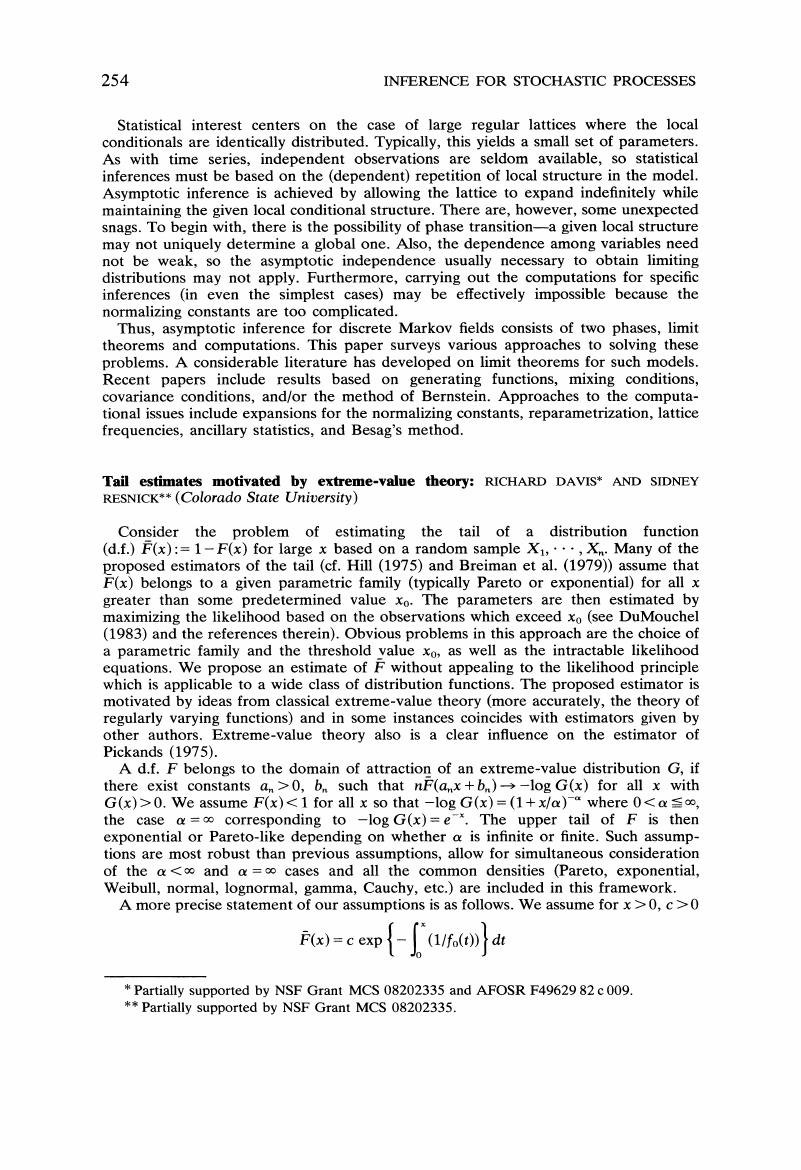No CrossRef data available.
Article contents
Tail estimates motivated by extreme-value theory
Published online by Cambridge University Press: 01 July 2016
Abstract
An abstract is not available for this content so a preview has been provided. Please use the Get access link above for information on how to access this content.

Information
- Type
- Inference for Stochastic Processes
- Information
- Copyright
- Copyright © Applied Probability Trust 1985
References
Breiman, L., Stone, C., and Ginns, J. (1979) New methods for estimating tail probabilities and extreme value distributions. Tech. Rept. #TSC-PD-A266-1, Technology Service Corp., Santa Monica, California 90405.Google Scholar
Dumouchel, W. (1983) Estimating the stable index a in order to measure tail thickness.
Ann. Statist.
11, 1019–1036.Google Scholar
Hill, B. M. (1975) A simple general approach to inference about the tail of a distribution.
Ann. Statist.
3, 1163–1174.Google Scholar
Pickands, J. (1975) Statistical inference using extreme order statistics.
Ann. Statist.
3, 119–131.Google Scholar
Weissman, I. (1978) Estimation of parameters and quantiles based on the k largest observations.
J. Amer. Statist. Assoc.
73, 812–815.Google Scholar

